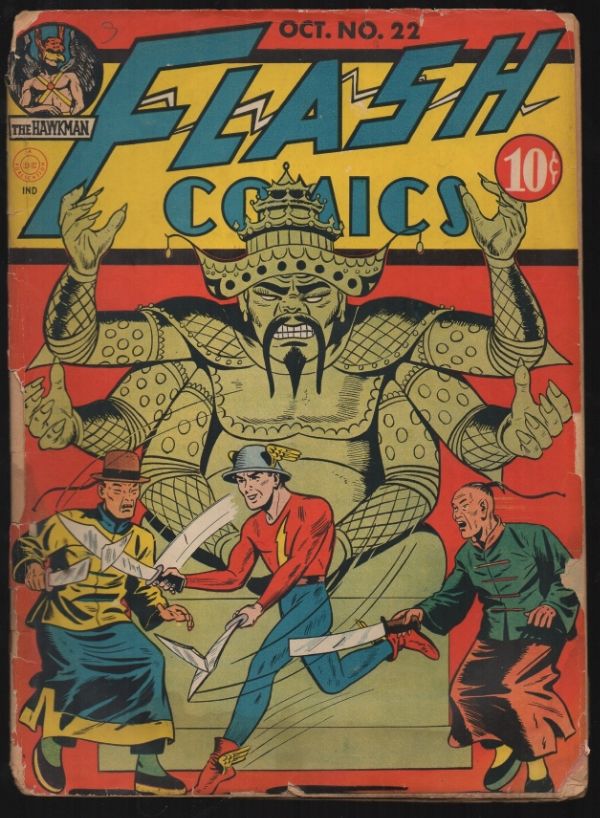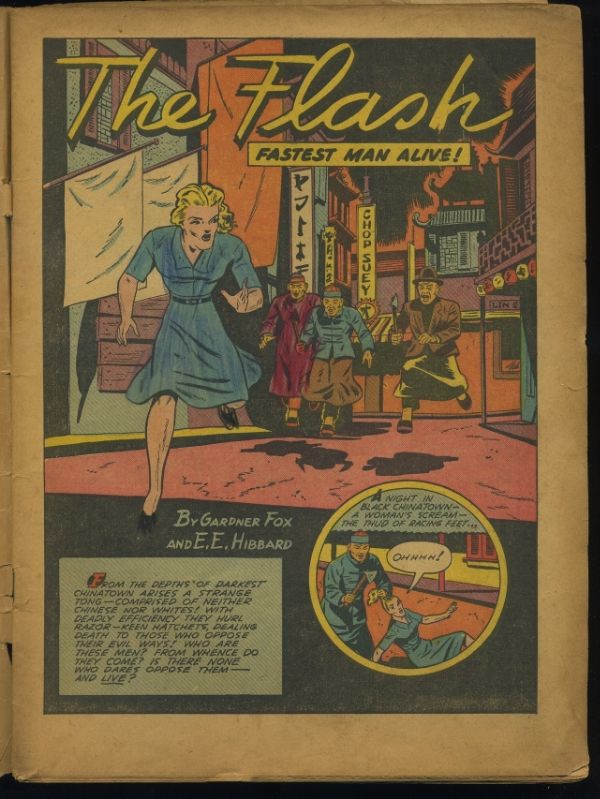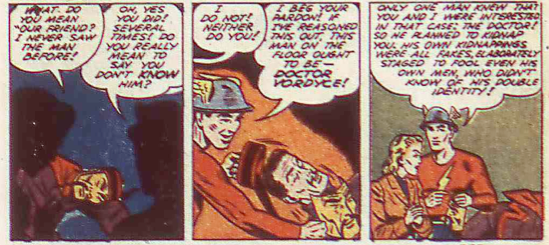October 1941
Rating: 5



The Cover story of the Flash battling Chinese Tong is a bit confusing and an excellent vehicle at the same time. Flash stories work best when he is helping Joan Williams get out of trouble – this story has that. However, the bad guy is confusing. Why would a successful white doctor want to change his appearance to resemble a Chinese Tong and rule the Chinatown underworld? The pencils and inks are credited to Hal Sharp. Which may explain why Joan looks less glamorous and a little to homely.
Having read these first 22 Flash stories, a central theme emerges. A bad conscious that leads one to do wrong will be reprimanded by the greater good. This simple formula helps explain why I’m interested in collecting this series. As the referee of two small boys under the age of five, they submit to my rulings without putting up much of a challenge.
I imagine that was the intent of the DC Editorial Board. It acted as a minder for the youth of the '40s.
Here is how these early stories can be broken down into genres:
Social realism – clearly define bounds of right vs. wrong (Flash and Les Sparks)
Whimsical flirtations outside the social norms with hazardous consequences (Thunder)
Ambiguous which side of the law is the good guy on (King)
2nd rate Lois and Clark adventure stories (Whip)
Detective stories (Flash Novelettes)
Violent world of supernatural phenomena (Hawkman)
I feel the first epoch of Flash Comics ends with #22. In the next issue, the stories start to reflect the political realities of war. In addition the character of the Flash and the Hawkman start to evolve into their next phase of myth building.

No comments:
Post a Comment